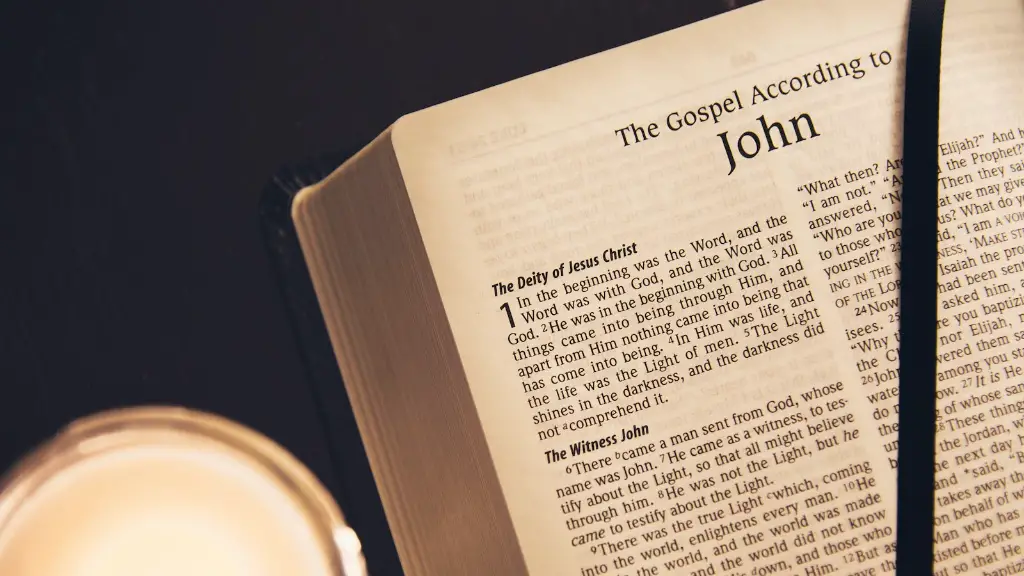Zerubbabel was an important figure in the Bible. He appears in both the Old and New Testaments. He is described as a leader and a governor of the Jews after their return to Jerusalem from exile. In the Old Testament, he is described as a Judahite, while in the New Testament he is referred to as a priest. According to Jewish tradition, he was the son of Shealtiel, the grandson of Jehoiachin, and the great grandson of King Jehoiakim.
In the Bible, Zerubbabel first appears in Ezra 2:2, where he is listed as a leader of 42,360 exiles returning to Jerusalem. Ezra also lists the return of governors with him: Jeshua and Nehemiah. Zerubbabel, who is referred to as a priest in Zechariah 4:6, is later mentioned in Ezra 4:3 and 5:2, where he is referred to as the leader and the governor of Judah. It appears that in the accounts of the return to Jerusalem, Zerubbabel acted as both a spiritual and political leader, suggesting he was an important figure within this community.
In the New Testament, Zerubbabel is listed by Luke in the genealogy of Jesus. According to this genealogy, Zerubbabel was the father of Abiud, who was the father of Eliakim, who was the father of Azor, who was the father of Zadok, who was the father of Achim, who was the father of Eliud, who was the father of Eleazar, who was the father of Matthan, who was the father of Jacob, who was the father of Joseph, who was the father of Jesus.
Despite being included in both the Old and the New Testaments, the chronology of the return of the Jews from exile is uncertain and the majority of the accounts mentioning Zerubbabel are found in the books of Ezra and Nehemiah. Furthermore, there is disagreement among scholars on the identity of Zerubbabel. Some scholars suggest that he was a political leader who was appointed by the Persian monarchy and was working as a governor of a small Judahite state, while other scholars suggest he was an important personality in the early days of Second Temple Judaism.
There are three possible explanations for who Zerubbabel is. The first explanation is that he was a royal descendent of the House of David, claiming public authority during the Second Temple. The second suggestion is that he was a Jewish Priest, represented the spiritual leadership in the Jewish community and was appointed to lead the return from Babylonian exile. The third explanation is that Zerubbabel was a Prophet who communicated with God and instructed the Jews on how to behave. Given the ambiguity of the biblical accounts, it appears that all three of these possibilities remain open to interpretation.
Cause of Exile
The cause of the Babylonian Captivity of Judah can be traced to the policies of King Nebuchadnezzar II who invaded Jerusalem and exiled its inhabitants for violating the covenant with Yahweh. According to the Old Testament, the exile was seen by Yahweh as a punishment for the disobedience of King Manasseh and his successors in Israel. Manasseh was the longest reigning king; during his reign he turned away from Yahweh and committed many sins. His policies led to the deportation of Israel to Babylon.
This is supported by King Josiah’s reforms, a series of reforms enacted by King Josiah to undo the wrongs of his father, King Manasseh. The reforms removed idols and their worship, rebuilding the Temple and restoring worship of Yahweh. The reforms are considered to have restored the covenant between Yahweh and his people, which had been weakened by previous Babylonian Captivity.
The effects of the Babylonian Captivity on the Judean population were severe. The nation was dispersed among the Babylonians and the exiles were subjected to degradation, humiliation, and suffering. However, the exile was not total. Many Jews were allowed to remain in Judah, where they continued to practice their rituals and observe the laws of the faith amidst their oppressive situation.
Post Exile
The Book of Ezra narrates the events that followed the return of the Jews to Jerusalem after their exile in Babylon. It provides information on the initial organization of the people in Jerusalem under the leadership of Zerubbabel. Zerubbabel was a key figure in this period, leading the work of the Temple, the reestablishment of the Jewish religious hierarchy and the reorganization of the judicial system.
Due to the return of the exiles, the Temple of Solomon was quickly rebuilt and Zerubbabel was appointed to be its chief architect. Construction began in 536 BCE and took two years. This marked a significant moment in the history of Judaism: the rebuilding of the temple was seen as a sign that Yahweh had forgiven the people and restored them to the land.
The book of Ezra also records that Zerubbabel helped to promote the practice of Judaism in the new community and was instrumental in the reestablishment of sacrifices, the main elements of the Temple cult. He helped to promote the laws of the covenant and tried to unify the people. As governor, Zerubbabel had the authority to appoint the High Priest and the Levites, who minister


